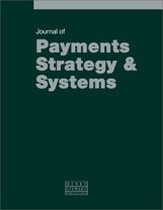The implications of legal entity identifiers on payments systems
Abstract
The Legal Entity Identifier (LEI) is a key component of the different market transparency regulations that emerged after the financial crisis. This paper demystifies the LEI and explores the background behind the creation and adoption of this new counterparty identifier. The development and implementation of LEI is a combined effort between the industry and the public authorities, which is probably a first ever. While the regulation currently focuses on the derivatives markets, the operational impacts on payments systems are not immediately significant, and there are still many unknowns. The paper highlights that the LEI is now a reality all around the globe and a new element that the financial industry will have to take into consideration going forward. In this new environment of greater regulation, organisations need to reconsider the silo-based approach and recognise the need for improved reference data that LEI can bring. Regulatory compliance can be a catalyst to improve reference data management by addressing these challenges at an enterprise level.
The full article is available to subscribers to the journal.
Author's Biography
Paul Janssens is the LEI Programme Director at SWIFT. He is leading the LEI initiative from concept to implementation. He has more than 10 years’ experience in reference data management and ISO standards across both operations and marketing. In this role, Paul was an active member of the ISO-TC68-Working Group that designed the ISO 17442 LEI Standard. He has been and still is a member of the different working groups initiated by the Financial Stability Board for the implementation of the Global LEI System. Since joining SWIFT in 1988, Paul has held different managerial positions, including Group Treasurer, EURO Programme Manager and Y2K Programme Manager. Prior to joining SWIFT, he worked at Société Générale as a cash management specialist.
